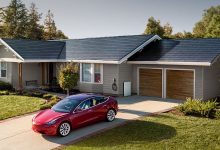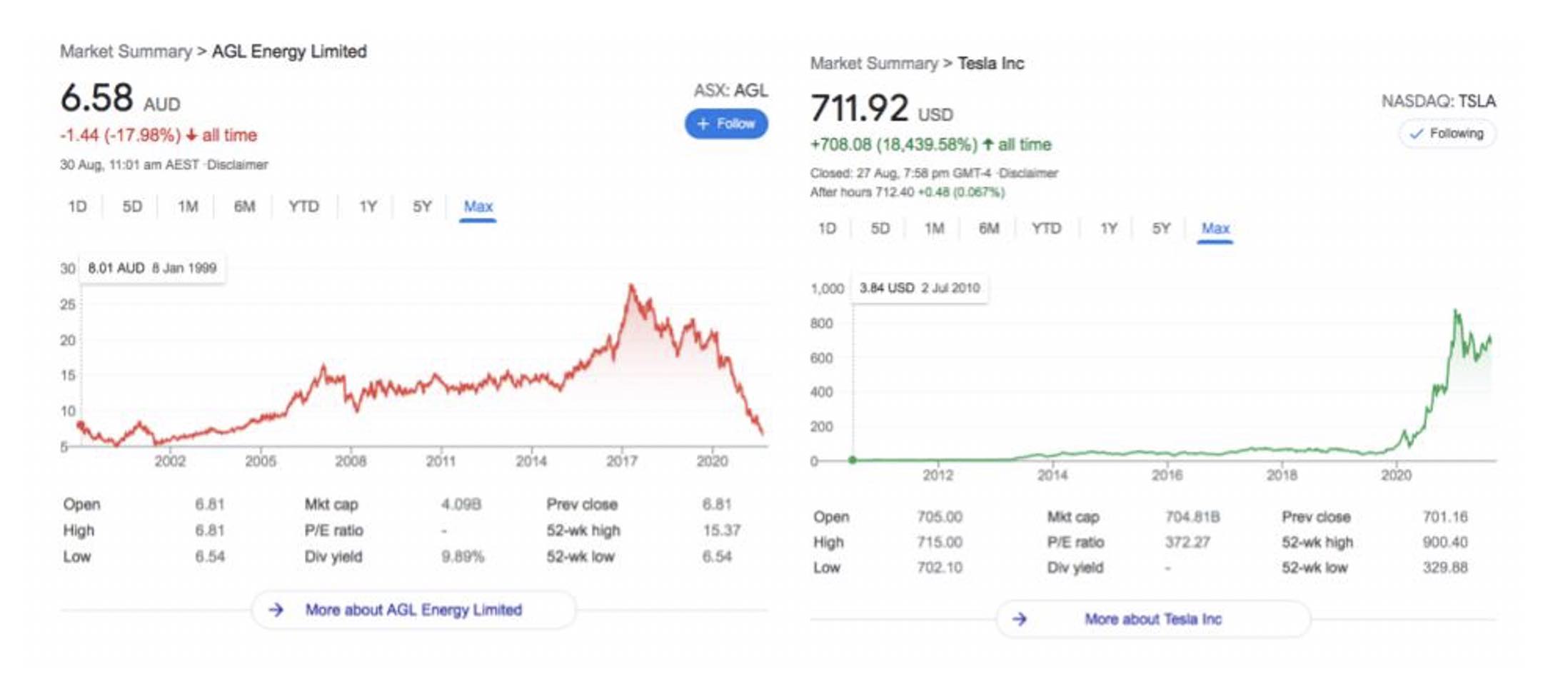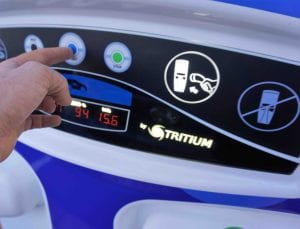Tesla’s recent AI Day was an important event. Important for the car industry, for the grid and utilities, and for the consumer, and humanity itself.
Here are five big implications for what it means for energy markets, and then for humanity. First up, what does it mean for energy markets?
Tesla is now approaching a zero marginal cost electricity distribution network … How so?
The primary function of Tesla’s car fleet is to transport people and goods. By definition, the transport service is fully paid for once those cars hit the road. But with a typical transport range of 450km+, and the typical commuter round trip being well under 100km, those cars are arriving at their destination with 30kWh+ of energy to spare.
This should scare the hell out of energy market incumbents, and any politician left standing when the energy market transformation music stops playing. Why?
Energy market cost structures vary over time and space – one year, wholesale market supply costs will play a big part in moving retail prices.
Another year, it could be network costs driven by rising costs of capital. But by and large, it is the transmission and distribution of energy that drives retail costs to homes and businesses.
If Tesla vehicles become truly autonomous, then Tesla manages a zero marginal cost transmission and distribution electricity network. With market attention focused on vehicle to grid, an elephant has quietly walked into the room largely unnoticed. That elephant is vehicle to home discharge of electricity.
Vehicle to grid is a complex, uncertain transaction for a consumer, which is going to be low value most of the year. It will only make sense with prices spiking on wholesale markets, or with a network support contract enabled via an aggregation scheme.
Vehicle to home is a simple transaction for a consumer, which is going to be high value all year round, particularly if it is the last step in grid disconnection. Standby for many homes with 6kW+ of solar, 12kWh of permanent storage, and no need for electricity from the distribution network ever again.
What does it mean for Tesla competitors?
The average Australian spends 4.5 hours per week commuting in their car and an entry level Tesla Model 3 with full self driving currently costs about $1,000/month on finance.
This means that anyone earning more than $55/hr, who gets a productivity gain from working in their car rather than driving it, fully pays for their Tesla model 3 from productivity gains alone.
For the average Australian earning an hourly rate of $36/hour, working 48 hours a week, that’s around $7,700/pa of productivity uplift potential created by an autonomous vehicle.
These owners can also rent out their cars when not in use – the average uber earns more in a week, in any of Australia’s capital cities, than you need in a month to pay off an entry level Model 3.
In other words, the value proposition for autonomous driving is an extreme competitive advantage because the feature pays for the car many times over.
While the autonomy race is not over yet, Tesla AI day shows how far ahead they are, and also how hard it will be to replicate their technology stack from here. Why? I see two main competitive moats:
- They have full vertical integration, from the car itself and chip design through to data processing and everything in between. The deep innovation required to replicate, let alone catch Tesla, will be very hard to do for other companies, who have to collaborate across organisational boundaries. Organisation structure more so than individual competence, stands in the way of deep and successful innovation. It is telling that one of Tesla’s main competitors is Mobileye – owned by Intel, who has a poor track record of acquiring, integrating and growing companies. The Ford Blue Cruise feature is powered by Mobileeye and this Sunday Munro review of Blue Cruisesays it all;
- The number of cars Tesla has on the road, in diverse driving conditions and gathering data is unrivalled. Even if a competitor replicates the Tesla tech stack at the back end, they are so far behind on real world driving data, it will be very difficult to catch up. Consumers realising value from autonomous driving today, or who understand the promise of its value tomorrow, will be digging this moat deeper and deeper until a competitor can come close, and that may prove to be an insurmountable lead for a long time
The idea of winner takes most innovation has been championed by Ark Invest, the active fund manager that shot to fame on their bold, and now with hindsight, correct calls on Tesla.
Apple takes the lion’s share of smart phone profits.Google the lions share of internet search activity. It stands to reason that one company has a shot at capturing the lion’s share of the autonomous driving value chain.
If Tesla wins this race, there will simply be no option for their competitors, other than to licence the Tesla technology stack – the value of autonomous driving to consumers is simply too high.
What does it tell us about the nature of innovation?
From electric car design and battery technology, through to computer chips, data processing and neural nets, Tesla has become a leader in each field.
However, technical leadership in any given field is almost a trivial long term advantage. It is typically easy to acquire technical leadership by hiring 5-50 key people, which papers over deeper, structural competitive weaknesses in the short term.
At the organisation level, long term competitive advantage comes from the ability to retain and grow that talent over time, and ultimately synthesise leadership across fields. This helps you solve fundamental problems faced by your customer, in contrast to incrementally enhancing the existing product or service you sell to customers.
But so few companies take on the challenge of solving deep customer problems, needed to secure and maintain long term advantage. Think of the difference between AGL acquiring talent to integrate Electric Vehicles or rooftop solar into its energy offering, while slowly dying as a company, compared to Tesla with $16b+ in the bank dominating across a wide range of interconnected industries.
Implications for humanity 1: Robot + Neural Link = Mars
Ok, now on to the fun stuff… hat tip here to good friend Nick Frederickson of Timing Solutions. Nick is a rapid Elon fan and has the concentrated super fund portfolio (#TSLA) to prove it.
Ponder this as you stare at the night sky… would you upload your consciousness (via neural link), to a robot that could live on Mars? What would that second life look like? How would it change your understanding of what it means to be alive?
I for one get a kick out of swimming at the beach with my kids and learning to do the monkey bars again as an adult. For a lot of people, a deeper escape calls them forward.
Science fiction has been a popular genre for a reason, and its quite possible that all your science fiction fantasies are on the verge of coming true. Or are they?
Implication for humanity 2: Designing a robot that can be overpowered
It seems like most people were impressed by Tesla’s technology stack, accepting the humanoid robot was a dancing distraction for now, and perhaps a bit too far off (Elon time) to be of real value.
The thing that caught my attention was at 2 hours 18 minutes and 20 seconds of Tesla AI Day, Elon highlights that it has been designed at the mechanical level, to be overpowered by humans.
When you look at the specs, it has a ten pound lift limit with arms extended and a 150 pound dead lift capacity. It has max speed of 5 miles per hour and weighs just 120 pounds.
These are seriously unimpressive specifications, and really limit what role a robot like this could play in a workforce. Subject to materiality, it is likely a human could defeat this robot with a small hammer.
So why do it? Popular youtuber Marques Brownlee tries to grapple with functional use cases, like going to the shops, making a bed, or getting things done around the house. But for me, this is purely a virtue signal tied to the Tesla Mission.
It is Elon saying to the world – the risks of AI are real, and Tesla as a company takes it seriously. Remember, Tesla AI Day was fundamentally about finding and hiring talent. The kind of talent that accepts mission comes first is the kind of talent that stays loyal, building compound advantage. It also helped spark conversation.
Sounds like Tesla? You bet.
About the author: Tosh Szatow is a sustainability and innovation junkie, co-founder at BOOMPower; and idea tinkerer at the Good Ideas Factory.










